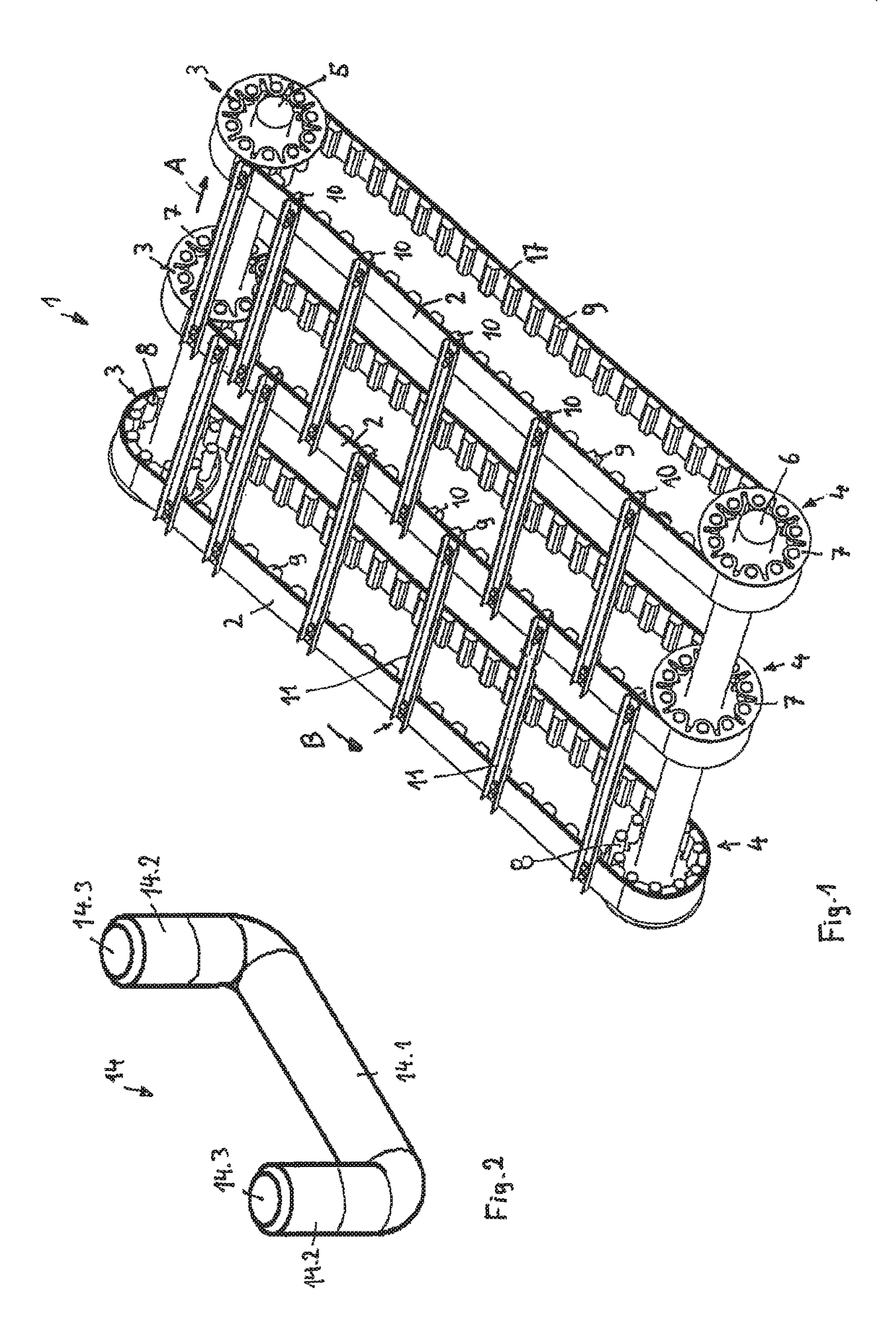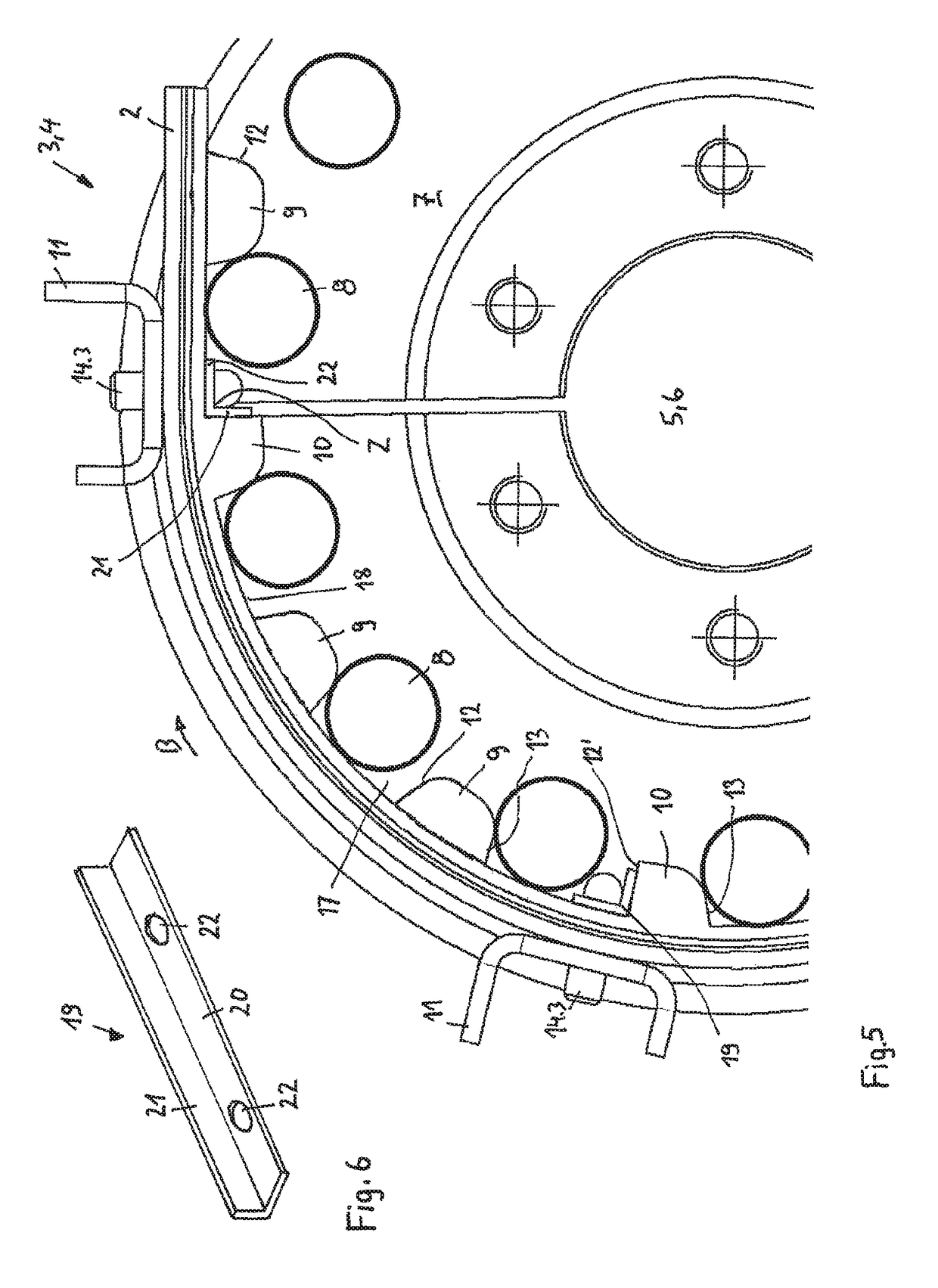Cambelt, in particular a cambelt suitable for agricultural machinery
a cambelt and agricultural machinery technology, applied in the field of cambelts, can solve the problems of reducing the reference diameter, adversely affecting the intermeshing of the system, and high wear on the surface of the carrier means and the rivet plate which comes into contact, and achieves the effects of low noise, low wear, and simple installation of the fastening means
- Summary
- Abstract
- Description
- Claims
- Application Information
AI Technical Summary
Benefits of technology
Problems solved by technology
Method used
Image
Examples
Embodiment Construction
[0028]FIG. 1 shows an inclined conveyor 1 for a combine harvester, having three cam belts 2 extending in parallel. The inclined conveyor conveys harvested crop in an undershot manner to a threshing unit of the combine harvester, not illustrated. The cam belts 2 are deflected via upper cam wheels 3 and lower cam wheels 4, which in this exemplary embodiment are designed as welded structures. A cast structure instead of a welded structure is also possible. The upper cam wheels 3 rest on a driven shaft 5, while the lower cam wheels 4, which rest on a shaft 6, are carried by the driven cam belts 2. The cam wheels 3 and 4 have a hub plate 7 that is connected in a rotatably fixed manner to the shafts 5, and carrier means or carriers 8 in the form of perpendicularly protruding cylindrical bolts 8 are welded at the circumference of the cam wheels.
[0029]In a first embodiment of the invention, the cam belts 2 have two types of cams: cams 9 or first cams 9 that are used solely for driving the c...
PUM
 Login to View More
Login to View More Abstract
Description
Claims
Application Information
 Login to View More
Login to View More - R&D
- Intellectual Property
- Life Sciences
- Materials
- Tech Scout
- Unparalleled Data Quality
- Higher Quality Content
- 60% Fewer Hallucinations
Browse by: Latest US Patents, China's latest patents, Technical Efficacy Thesaurus, Application Domain, Technology Topic, Popular Technical Reports.
© 2025 PatSnap. All rights reserved.Legal|Privacy policy|Modern Slavery Act Transparency Statement|Sitemap|About US| Contact US: help@patsnap.com



